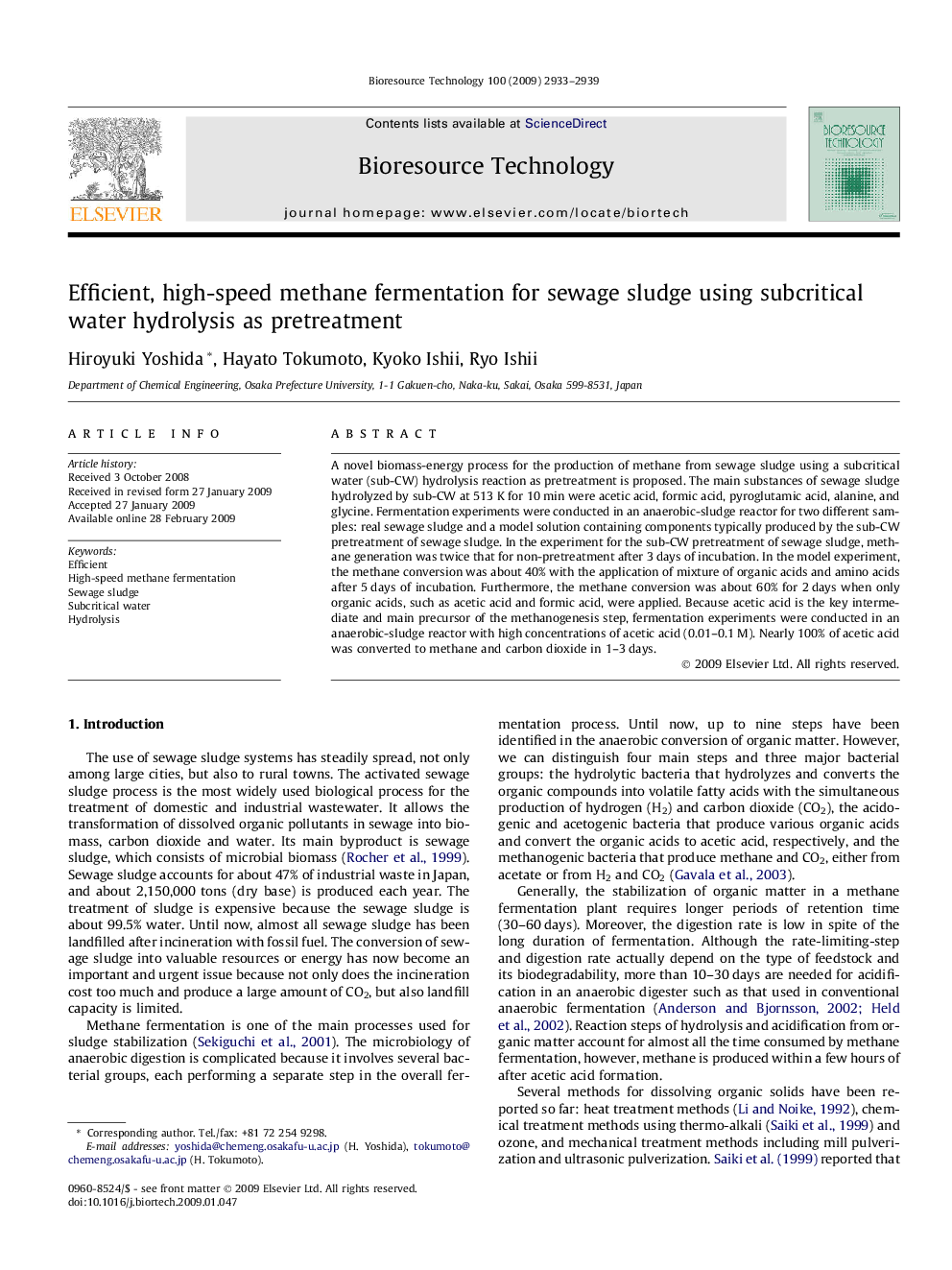| Article ID | Journal | Published Year | Pages | File Type |
|---|---|---|---|---|
| 684974 | Bioresource Technology | 2009 | 7 Pages |
A novel biomass-energy process for the production of methane from sewage sludge using a subcritical water (sub-CW) hydrolysis reaction as pretreatment is proposed. The main substances of sewage sludge hydrolyzed by sub-CW at 513 K for 10 min were acetic acid, formic acid, pyroglutamic acid, alanine, and glycine. Fermentation experiments were conducted in an anaerobic-sludge reactor for two different samples: real sewage sludge and a model solution containing components typically produced by the sub-CW pretreatment of sewage sludge. In the experiment for the sub-CW pretreatment of sewage sludge, methane generation was twice that for non-pretreatment after 3 days of incubation. In the model experiment, the methane conversion was about 40% with the application of mixture of organic acids and amino acids after 5 days of incubation. Furthermore, the methane conversion was about 60% for 2 days when only organic acids, such as acetic acid and formic acid, were applied. Because acetic acid is the key intermediate and main precursor of the methanogenesis step, fermentation experiments were conducted in an anaerobic-sludge reactor with high concentrations of acetic acid (0.01–0.1 M). Nearly 100% of acetic acid was converted to methane and carbon dioxide in 1–3 days.
